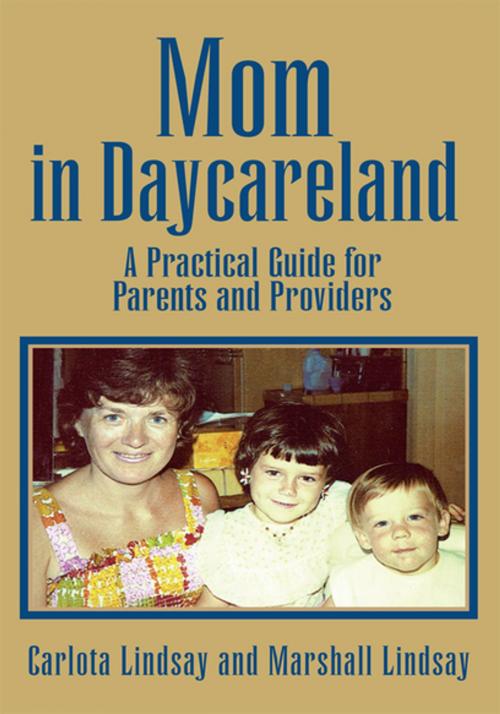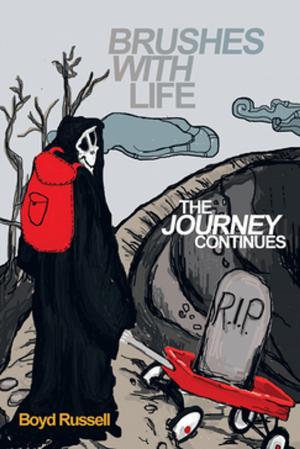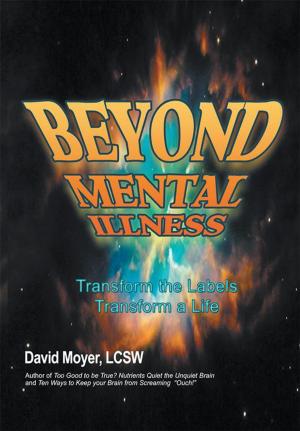Mom in Daycareland
A Practical Guide for Parents and Providers
Nonfiction, Health & Well Being, Self Help| Author: | Carlota Lindsay, Marshall Lindsay | ISBN: | 9781477172810 |
| Publisher: | Xlibris US | Publication: | April 15, 2002 |
| Imprint: | Xlibris US | Language: | English |
| Author: | Carlota Lindsay, Marshall Lindsay |
| ISBN: | 9781477172810 |
| Publisher: | Xlibris US |
| Publication: | April 15, 2002 |
| Imprint: | Xlibris US |
| Language: | English |
Letter to the Reader
Mom in Daycareland is about children, but it is addressed both to parents and to providers of child care in the hope that these pages will help them understand each others needs and the stresses they experience in their respective childrearing and caregiving activities. For the childrens sake, they must see each other not as antagonists but as partners in this most important of all careers: molding the future of the human race.
Today the need for child care is more widely accepted by the general public than it was years ago. We used to think that children should be reared at home and that a mothers job was to take care of them. Now all this has changed. Early every morning millions of mothers and fathers drive their children to child care providers and leave them there, most often without feeling uneasy or guilty. What has happened to cause this shift in our attitudes? Why have we given up ideas that once seemed sacred and replaced them with a pragmatic way of doing things that would have made our grandmothers frown?
The authors remember a time when it was expected that Dad would go off to work every morning, leaving Mom and the kids at home. He had a job outside the home and brought back the paycheck; she did the housework and cooking, took care of the children. Only occasionally were the children entrusted to someone else, as when the parents went to a dinner party or a movie and had a local high school student over to sit or drove the kids to Grandmas for the night. There were exceptions, of course, but this was the accepted pattern.
Today that pattern, while still prevalent in some families, is rare. The social and economic realities of our country have changed radically, and the structure of family life has had to adapt. There are several reasons for the shift, and others will undoubtedly surface at a later date, but what seems to be the most important among them are the following. Firstly, to make ends meet, todays parents are obliged more and more to share the burden of earning the wages. Both Mom and Dad need full time work if the family is to survive financially or if it is to satisfy the standard of living they are used to. In the meantime, who takes care of the children while both are at work? Secondly, another reason that helps explain why Mom works, even when there is no pressing financial need for her to do so, is the realization that women have an equal right to achieve their potentialities in the world of the professions and of labor. Finally, and perhaps most importantly, an ever increasing number of households are managed by single parents. When Mom or Dad is the only provider in the family, no one is going to suggest that she or he stay home and watch the children. That single job is essential to the survival of a family in an already precarious financial bind. Even when the children are sick, the single parent has to report to work in order to keep that precious job.
For these and other reasons, the need for child care is a simple reality in our present society, and the trend is likely to continue. In most communities throughout the country groups of interested people argue that the availability of child care services is insufficient to meet current needs let alone the demands of a growing population.
We would like to talk about ourselves, briefly, as authors. Both of us have had life careers in higher education. In 1980 we devoted ourselves to child care and started a proprietary child care center in the Northwest. It began small and then in time grew to a size of 35 preschoolers. From the beginning, Carlota operated the center from 6:30 a.m. to 6:00 p.m. as director, teacher, public relations person, cook, and janitor; only recently has she begun coming home in the late afternoon. Marshall was frequently teacher, maintenance person, and accountant. It was difficult yet rewarding work, and it taught us many things. The purp
Letter to the Reader
Mom in Daycareland is about children, but it is addressed both to parents and to providers of child care in the hope that these pages will help them understand each others needs and the stresses they experience in their respective childrearing and caregiving activities. For the childrens sake, they must see each other not as antagonists but as partners in this most important of all careers: molding the future of the human race.
Today the need for child care is more widely accepted by the general public than it was years ago. We used to think that children should be reared at home and that a mothers job was to take care of them. Now all this has changed. Early every morning millions of mothers and fathers drive their children to child care providers and leave them there, most often without feeling uneasy or guilty. What has happened to cause this shift in our attitudes? Why have we given up ideas that once seemed sacred and replaced them with a pragmatic way of doing things that would have made our grandmothers frown?
The authors remember a time when it was expected that Dad would go off to work every morning, leaving Mom and the kids at home. He had a job outside the home and brought back the paycheck; she did the housework and cooking, took care of the children. Only occasionally were the children entrusted to someone else, as when the parents went to a dinner party or a movie and had a local high school student over to sit or drove the kids to Grandmas for the night. There were exceptions, of course, but this was the accepted pattern.
Today that pattern, while still prevalent in some families, is rare. The social and economic realities of our country have changed radically, and the structure of family life has had to adapt. There are several reasons for the shift, and others will undoubtedly surface at a later date, but what seems to be the most important among them are the following. Firstly, to make ends meet, todays parents are obliged more and more to share the burden of earning the wages. Both Mom and Dad need full time work if the family is to survive financially or if it is to satisfy the standard of living they are used to. In the meantime, who takes care of the children while both are at work? Secondly, another reason that helps explain why Mom works, even when there is no pressing financial need for her to do so, is the realization that women have an equal right to achieve their potentialities in the world of the professions and of labor. Finally, and perhaps most importantly, an ever increasing number of households are managed by single parents. When Mom or Dad is the only provider in the family, no one is going to suggest that she or he stay home and watch the children. That single job is essential to the survival of a family in an already precarious financial bind. Even when the children are sick, the single parent has to report to work in order to keep that precious job.
For these and other reasons, the need for child care is a simple reality in our present society, and the trend is likely to continue. In most communities throughout the country groups of interested people argue that the availability of child care services is insufficient to meet current needs let alone the demands of a growing population.
We would like to talk about ourselves, briefly, as authors. Both of us have had life careers in higher education. In 1980 we devoted ourselves to child care and started a proprietary child care center in the Northwest. It began small and then in time grew to a size of 35 preschoolers. From the beginning, Carlota operated the center from 6:30 a.m. to 6:00 p.m. as director, teacher, public relations person, cook, and janitor; only recently has she begun coming home in the late afternoon. Marshall was frequently teacher, maintenance person, and accountant. It was difficult yet rewarding work, and it taught us many things. The purp















